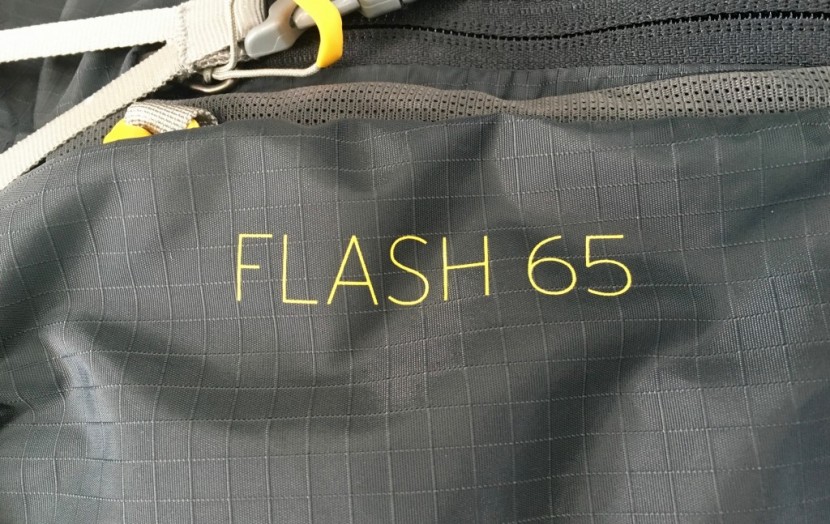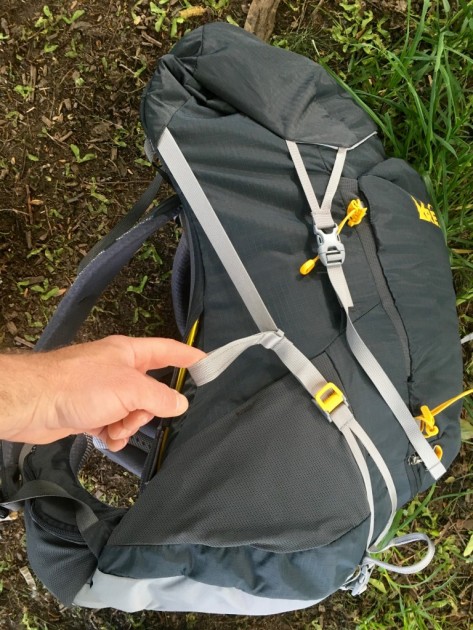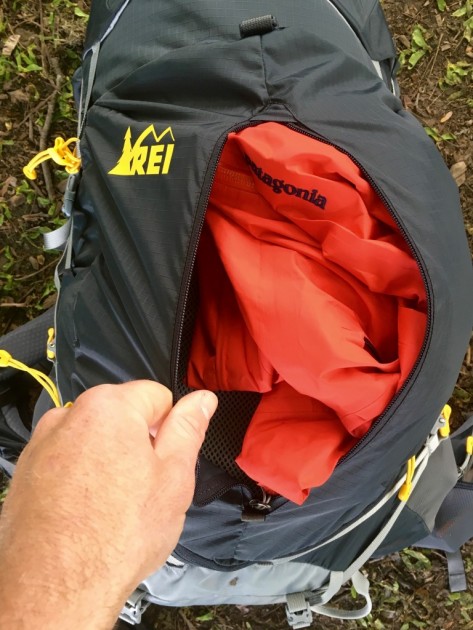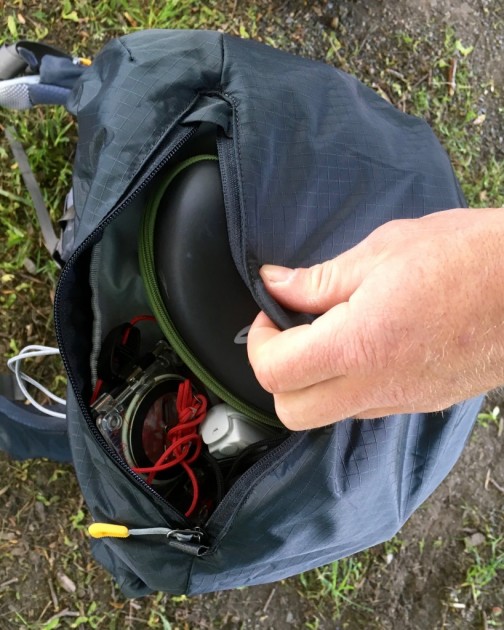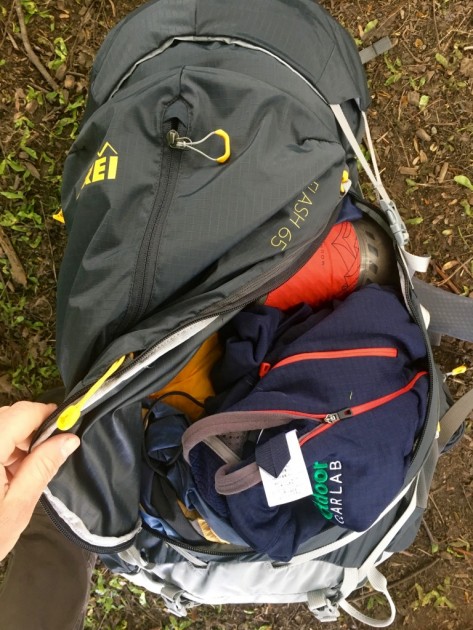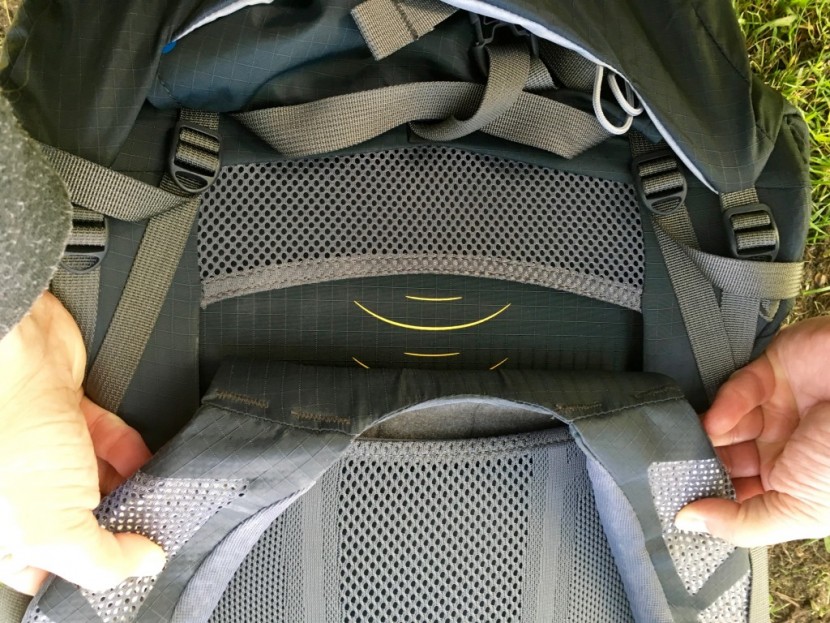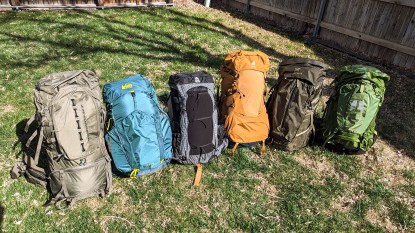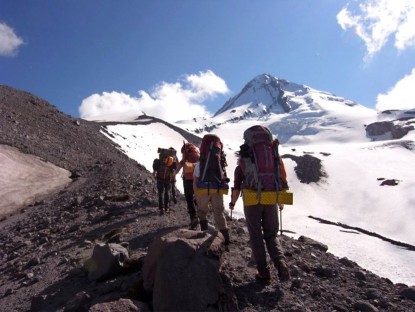REI Flash 65 Review
Our Verdict
Our Analysis and Test Results
If you want lighter pack but aren't ready or don't really want to give up much in the way of features or suspension, then the Flash 65 strikes an excellent balance. It is lighter than average, tipping the scale at below four lbs, while not giving up much in the way of suspension, features, or access.
Comfort
The Flash 65 is more comfortable than you might first give it credit for; as one of the lighter packs in the review, it still carried fantastically, even on six day long adventures. It was more comfortable than average among packs in our review and our testers thought it was noticeably more pleasant to carry with moderate loads (30-40 lbs) versus the 2 lbs 8 oz Osprey Exos 58. This pack was very close in comfort to the North Face Banchee 65, but not quite as nice of a ride as the Gregory Baltoro 65 or Osprey Aether AG 60.
We also really liked the design and ergonomics of the pack's waist belt. With 40 lb loads (our most common weight for side-by-side comparison tests), this pack was among the top performers and offered noticeably better performance than several of the much heavier packs. While we don't think there is much of a difference among many of the “breathable back panel designs”, this model's perforated shoulder straps allowed significantly more moisture.
Weight
At 3 lbs 10 ozs, this contender is one of the lighter packs in our review, equal in weight to The North Face Banchee 65 and lighter than many other, similarly designed packs, including the 4 lbs 6 oz Top Pick, the Osprey Atmos 65 AG, the Editors' Choice Arc'teryx Bora AR 63, or the mega-popular Osprey Aether AG 60 (5 lbs 2 ozs).
One of the best parts about the Flash is that it doesn't give up a ton in the way of features or comfort compared to the other packs we tested, but it still weighs noticeably less. That said, this pack performed slightly better in our side-by-side testing with a 40 lbs load and is just over a pound heavier than our Top Pick for the best lightweight backpacking pack, the Osprey Exos 58 (2 lbs 8 oz).
Suspension
The suspension is more significant than we first gave it credit for, especially considering its three and a half pound weight. Our testers felt this competitor was good for loads up to around 40-45 lbs and that we could go a little heavier than that if we needed to for a few days, though it wouldn't particularly be ideal. This pack featured a noticeably more substantial suspension system and offered more support than the Osprey Exos 58. It was comparable to the The North Face Banchee 65 and the Osprey Aether AG 60, but wasn't nearly as robust as the Baltoro 65 or Osprey Xenith 75. For loads around 45 lbs, this pack performed equally to our Editors' Choice award winner, the Arc'teryx Bora and was on par with the performance of the REI Flash 65.
A unique feature is the pack's vertical oriented tension straps on either side of the pack; these straps helped to improve distribution of the load onto the frame. While we could certainly notice an improvement when these straps were tightened, and we would 100% recommend utilizing them when you load this pack up for overnight trips, we didn't think it was enough to outperform several of other models in our review.
Features and Ease of Use
This model has many convenient easy-to-use features that most backpackers and travelers will appreciate. It features a large external zippered pocket with an internal mesh organizer sleeve; this pocket is easily big enough for a rain shell, field book, or many other small to medium sized items that a user might want to be easily accessible. Behind this entire zippered pocket is a non-zippered beaver tail-style pocket that we found to be the perfect size for flip flops or low profile camp shoes. These pockets were great, but we did like the pocket layout on The North Face Banchee and Osprey Atmos 65 AG a little better, as the Banchee allowed these pockets to be more easily accessed when the pack was full. However, the Flash's organizational abilities are better than the Osprey Exos 58.
The Flash features a typical zippered lid pocket that can be accessed from the outside of the pack; there is also a full sized mesh zippered pocket underneath the lid. While this is typically one of the most classically utilized pockets on a backpacking pack, we used the top lid slightly less because it was harder (than most other options) to find smaller items. The hip belt pockets are nice for smaller items, but aren't quite as easy to access as some of the other options out there. We never missed having a specific “sleeping bag compartment” on this pack because of the large J-shaped zippered opening. This feature allowed us to access almost anything in the main compartment of the pack fairly easily.
Adjustability
Unlike the older Flash 62, this newest version of the 65 offers 2-3" of torso length adjustability, which is similar to several of Osprey's models, and offers a little more (~1-2") range of adjustment. The shoulder straps attached via a velcro flap that sits inside a narrow sleeve that is behind the back panel; this panel can be shifted up or down to further tailor the pack to the user's height. The 65's three torso length options, plus some torso length adjustment, allowed this pack to fit a fairly wide range of people; our taller testers (6'4") found this pack to be a great option.
Best Applications
This pack is big enough for most people and is a great option for a 2-5 day backpacking trip or the occasional moderate mountaineering trip; it could be used for longer trips if you pack it accordingly. The smallest torso size could be used by most teens or tweens that are big enough to carry a 65 L pack; if a 60-70 L kid pack is what you are after, we'd recommend looking at the one-size-fits-all mega adjustable Osprey Volt. The large “J” shaped opening allows the contents of this pack to be accessed like a piece of more traditionally designed luggage and makes for an excellent travel pack or provides the option to easily go travel “backpacking” through places like Europe or Southeast Asia.
Value
At $200, this pack is a fantastic value. While it is slightly more expensive than the much simpler Osprey Volt 60 ($180) or Osprey Exos 58 ($220), it offers more features and weighs slightly less. Compared to other lighter-than-average backpacking packs that we reviewed, like The North Face Banchee ($240) or the Osprey Exos 58 ($220), this model is slightly less expensive and doesn't give up much in the way of performance.
Conclusion
The Flash is a fairly fully featured pack that remains lighter-than-average in weight and rings in at a great price. While it was barely edged out for winning any awards, it was a very strong contender for both our Best Buy Award and our Top Pick for the best lightweight pack. Not only is it comfortable and comes complete with very usable and functional features, but it weighs in at an impressive 3 pounds 10 ounces.



